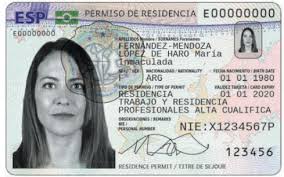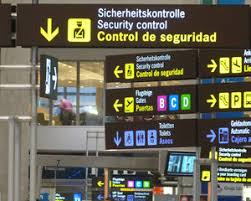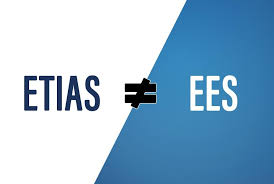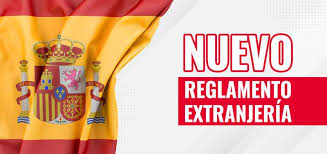By The Spanish Fly
 The British Foreign Office is urging all British people living in Spain to ensure they have exchanged their old residency cards for the TIE card (Tarjeta de Identidad Extranjero) as soon as possible, warning that problems lie ahead for those who don’t.
The British Foreign Office is urging all British people living in Spain to ensure they have exchanged their old residency cards for the TIE card (Tarjeta de Identidad Extranjero) as soon as possible, warning that problems lie ahead for those who don’t.
Preamble
It is essential UK residents here in Spain have a  , as many still don’t. TIE stands for Tarjeta de Identidad de Extranjero.
, as many still don’t. TIE stands for Tarjeta de Identidad de Extranjero.
I changed mine some while ago and it’s invaluable. It looks just like a Spanish ID card and is a valid form of identification. I no longer carry my British passport around. It’s at home in a drawer in my study.
Being a Spanish resident of some 15 years standing, I am not subject to the 90-day rule, so I am not required to have my passport stamped when I leave or enter Spain, and the TIE is proof that that is the case. When this procedure was first introduced I found I had to explain it all to the nice border police at Malaga Airport, but now they’re used to it and just wave you through.
According to the British Embassy in Madrid, in June of 2024, 200,000 British residents in Spain still had not exchanged their old green ID cards or paper certificates for the new biometric TIE identity cards.
With the new EES system about to come into force next year, travelling anywhere out of the Schengen area, even briefly, British people without a TIE could suffer big problems trying to return.
What is the EES?
 EES (Entry/Exit System) is a Schengen zone system run by the EU in order to make the external Schengen border more secure.
EES (Entry/Exit System) is a Schengen zone system run by the EU in order to make the external Schengen border more secure.
It is an IT system operated at all Schengen borders, and it will apply to all non-EU nationals who do not need a visa to travel. It does not change any of the rules on immigration; it simply makes their enforcement more rigorous.
Certain EU member states have previously applied more discretion, but now they will be obliged to be much stricter, especially with regards to the 90-day rule. The date for its implementation is early 2025.
EES will replace passport stamping with an electronic record.
This will consist of biometric data, such as a biometric photograph, which will create an electronic file for you, and then that data sits in the EES system for 3 years.
The file will record the exact time when a person has entered the Schengen zone and activate an automated calendar ticking away in the background, which can be consulted online.
Is EES different from ETIAS?
 ETIAS is an acronym for the European Travel Information and Authorisation System. It was created in September 2018 and is designed to improve the security of EU member states within the Schengen area. It captures data on travellers that visit the 26 countries within the Schengen Area without the need for a visa.
ETIAS is an acronym for the European Travel Information and Authorisation System. It was created in September 2018 and is designed to improve the security of EU member states within the Schengen area. It captures data on travellers that visit the 26 countries within the Schengen Area without the need for a visa.
It’s important to note that ETIAS is not a visa, it’s a visa waiver, similar to an ESTA required for entering the USA.
ETIAS is similar and will apply to UK nationals. This will come in at some point after EES. Therefore, any website currently offering to get you an ETIAS is a fraud, so be warned.
Why should it matter to you?
If you are registered as living in Spain, you are exempt from the EES system, but only if you are a holder of a TIE card, which already contains your biometric data.
 Without a TIE, you will be put into the EES system. That could be a problem because the automatic calculator will start ticking for you and the system will think you have outstayed your welcome in Spain and is likely to cause you problems.
Without a TIE, you will be put into the EES system. That could be a problem because the automatic calculator will start ticking for you and the system will think you have outstayed your welcome in Spain and is likely to cause you problems.
No one knows yet what those problems will be, but in a worst-case scenario, it could mean a Schengen travel ban and a court case to get back into the EU again.
For this reason, if you have not got a TIE yet, PLEASE APPLY without further delay. Go to the Foreigners Desk (EXTRANJERIA) at your nearest Policia Nacional office, if you live in a town or city, or to the Guardia Civil, if you live in a village.
Better, get a move on.
How to get a TIE?
You can apply for a TIE card (or exchange a green card) at your local Policia Nacional/Guardia Civil or immigration office in Spain.
You will need the following documents to apply:
- completed application form
- proof of payment (at a bank)
- proof of address
- visa
- three passport sized photos
- your NIE number.
Please note that children must also be registered and obtain their own TIE.
© The Spanish Fly
Useful links:
HOW TO …..apply for a replacement TIE
www.immigrationspain.es
https://sede.administracionespublicas.gob.es
Acknowledgements:
Adam Woodward
Euro Weekly News
Paul Whitelock
www.immigrationspain.es
Images:
Ambassade de France en Espagne
European Union
LegalTeam
Passport Info
Tags:
90-day rule, Adam Woodward, Ambassade de France en Espagne, automated calendar, biometric, British Embassy in Madrid, British Foreign Office, electronic record, EES, Entry/Exit System, ETIAS, European Travel Information and Authorisation System, European Union, Euro Weekly News, Guardia Civil, HOW TO …..apply for a replacement TIE, https://sede.administracionespublicas.gob.es, immigration office, LegalTeam, NIE, Passport Info, passport stamping, Paul Whitelock, Policia Nacional, TIE, Tarjeta de Identidad Extranjero, The Spanish Fly, www.immigrationspain.es